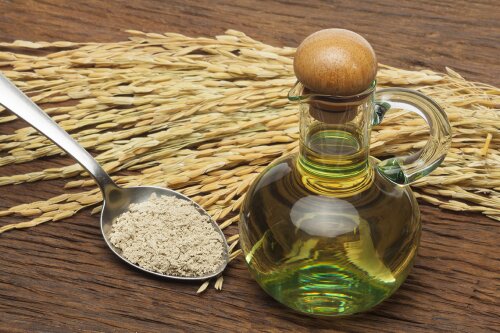Ferulic acid
Ferulic acid makes chemistry a bit greener
Flemish scientists make important chemical building block from renewable raw material
Scientists from the universities of Antwerp, Ghent and Leuven have succeeded in producing catechol in a more sustainable way, on the basis of a renewable raw material. Catechol, which is produced through petrochemical processes, is an important basic building block in chemical industry and is used to produce rubber, pharmaceuticals and colorants, among other things.
Catechol is an important industrial base product. Around 40,000 tonnes of it are produced annually by companies such as Solvay. This molecule is an essential building block in the production of a wide range of products with different applications, including pharmaceuticals, agrochemicals, synthetic fragrances, flavourings, electronics and polymers. Until now, it could only be derived from crude oil via petrochemical processes.
“There has to be a more sustainable way,” thought researchers from UAntwerp, UGent and KULeuven. “In Antwerp, we are doing research on biorenewable chemicals,” explains Prof. Bert Maes, Collen-Francqui research professor in UAntwerp's Department of Chemistry and spokesperson for the research excellence consortium CASCH. “Based on our expertise we focused on ferulic acid, which can be found in rice, wheat, corn and bamboo. In cereal crops, it is found in the bran, which usually ends up as a waste product. By working out a way to make catechol from it, our research contributes to the valorisation of agricultural waste flows”.
One simple step
Ferulic acid is a biorenewable starting material, obtained from a waste product. The Flemish scientists developed a process to convert this molecule into catechol in one simple step. Maes: “Our process involves heating ferulic acid to 250 °C in water along with a small quantity of a strong acid (e.g. hydrochloric acid), which acts as a catalyst. If we increase the pressure (e.g. to 50 bar), the boiling point of the water goes up, so it remains liquid. This is crucial for the chemical reaction. After cooling and a few simple operations, pure catechol is obtained.”
The research was made possible thanks to an Excellence of Science (EOS) project funded by the Research Foundation – Flanders (FWO) and its Walloon counterpart FNRS, and support from Catalisti. A paper describing the research results appeared in 'Angewandte Chemie International Edition', one of the world’s most prestigious journals in the field of chemistry, and will even feature on the cover of the journal.